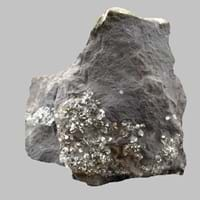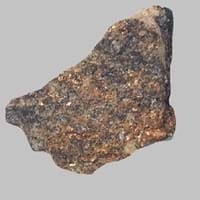Definition
Argillites are highly compact sedimentary or slightly metamorphosed rocks that consist largely or wholly of particles of clay or silt but lack the fissility of shale or the cleavage characteristic of slate
Adakite is an intermediate to felsic volcanic rock that has geochemical characteristics of magma which is said to be formed by partial melting of altered basalt that is subducted below volcanic arcs
Origin
Unknown
Adak, Aleutian Islands
Discoverer
Unknown
Defant and Drummond
Etymology
From Latin Argilla (clay) and -ite in English which became agrilla+ -ite = Argillite
From Adak, Aleutian Islands
Class
Sedimentary Rocks
Igneous Rocks
Sub-Class
Durable Rock, Soft Rock
Durable Rock, Medium Hardness Rock
Group
Not Applicable
Volcanic
Other Categories
Fine Grained Rock, Opaque Rock
Fine Grained Rock, Medium Grained Rock, Opaque Rock
Texture
Clastic, Polished
Porphyritic
Color
Dark Grey to Black, Pink, Red, White
Black, Brown, Light to Dark Grey
Durability
Durable
Durable
Appearance
Rough and Dull
Dull and Soft
Interior Uses
Decorative Aggregates, Homes, Interior Decoration
Decorative Aggregates, Floor Tiles, Homes, Hotels, Kitchens
Exterior Uses
As Building Stone, Garden Decoration, Office Buildings
As Building Stone, As Facing Stone, Office Buildings
Other Architectural Uses
Curbing, Whetstones
Whetstones
Construction Industry
Used for flooring, stair treads, borders and window sills.
As Dimension Stone, Cobblestones, Rail Track Ballast, Roadstone
Medical Industry
Not Yet Used
Not Yet Used
Antiquity Uses
Artifacts, Monuments, Sculpture
Monuments, Sculpture, Small Figurines
Commercial Uses
Fire resistant, Used to manufracture paperweights and bookends
Commemorative Tablets, Pottery, Used in aquariums
Types
Not Available
Not Available
Features
Is one of the oldest rock
Has High structural resistance against erosion and climate, Host rock for Diamond, Very fine grained rock
Archaeological Significance
Famous Monuments
Data Not Available
Data Not Available
Famous Sculptures
Data Not Available
Data Not Available
Formation
An argillite is a fine-grained sedimentary rock mainly composed of clay particles which forms from lithified muds which contain variable amounts of silt-sized particles.
Adakite rocks are formed when the hydrous fluids are released from minerals that break down in metamorphosed basalt, and rise into the mantle they initiate partial melting.
Mineral Content
Biotite, Chlorite, Feldspar, Micas, Muscovite or Illite, Plagioclase, Pyrite, Quartz
Olivine, Plagioclase, Pyroxene
Compound Content
Iron(III) Oxide, Potassium Oxide, MgO, Silicon Dioxide
Aluminium Oxide, MgO, Silicon Dioxide
Types of Metamorphism
Not Applicable
Cataclastic Metamorphism, Contact Metamorphism, Impact Metamorphism, Regional Metamorphism
Types of Weathering
Biological Weathering
Chemical Weathering, Mechanical Weathering
Types of Erosion
Chemical Erosion
Coastal Erosion, Sea Erosion, Water Erosion
Grain Size
Fine Grained
Fine to Medium Grained
Fracture
Conchoidal to Uneven
Conchoidal
Streak
White to Grey
Bluish Black
Porosity
Highly Porous
Less Porous
Luster
Waxy and Dull
Grainy, Pearly and Vitreous
Cleavage
Slaty
Not Available
Toughness
2.6
Not Available
Specific Gravity
2.56-2.68
Not Available
Transparency
Opaque
Opaque
Density
2.54-2.66 g/cm3
Not Available
Specific Heat Capacity
Not Available
Resistance
Heat Resistant, Impact Resistant
Heat Resistant, Pressure Resistant, Wear Resistant
Deposits in Eastern Continents
Asia
Bangladesh, China, India, Russia
India, Russia
Africa
Ethiopia, Kenya, Morocco, South Africa, Tanzania
Ethiopia, Somalia, South Africa
Europe
Austria, France, Germany, Greece, Italy, Romania, Scotland, Spain, Switzerland
Iceland
Others
Not Yet Found
Not Yet Found
Deposits in Western Continents
North America
USA
Canada, USA
South America
Bolivia, Chile, Colombia, Ecuador, Peru, Venezuela
Brazil
Deposits in Oceania Continent
Australia
New South Wales, New Zealand, Queensland, Victoria, Western Australia
Not Yet Found










